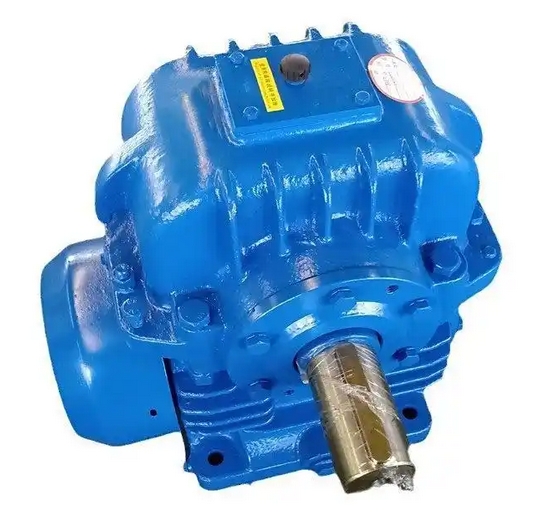How to ensure the normal operation of the CWU100-8.3-3 worm gear reducer
To ensure the normal operation of CWU100-8.3-3 worm gear reducer, it is necessary to start from multiple aspects such as installation, lubrication, operation monitoring, maintenance, etc., as follows:
Correct installation
Basic fixation: Ensure that the installation base of the reducer is flat and firm, and the anchor bolts need to be tightened to prevent vibration and displacement caused by unstable base during operation, which may affect the normal operation of the reducer.
Axis alignment: The axis of the worm gear and worm wheel should be vertically aligned with an error of ≤ 0.02mm. At the same time, the input shaft and motor shaft, as well as the output shaft and load shaft, should be connected through couplings to ensure coaxiality, otherwise it will lead to increased bearing wear, excessive vibration, and other problems.

Reasonable lubrication
Lubricating oil selection: Choose lubricating oil with high viscosity and good extreme pressure performance, such as worm gear oil. Choose lubricating oil with appropriate viscosity grade according to different working environment temperatures. For example, ISO VG68 lubricating oil can be used when the ambient temperature is below 0 ℃, and VG220 or above can be used for high temperature conditions.
Lubrication method: Choose appropriate lubrication methods such as oil bath lubrication, splash lubrication, or forced lubrication according to the working conditions. At the same time, it is necessary to regularly check the oil level to ensure sufficient lubricating oil. The oil level in the oil tank should cover 1-3 times the height of the large gear teeth. Excessive oil can easily generate heat, while insufficient oil can lead to insufficient lubrication.
Replace lubricating oil: Replace the lubricating oil every 2000 hours or six months of operation, and replace the lubricating oil after the first 300 hours of operation. If the oil pollution level exceeds the standard, it should be replaced in a timely manner.
Monitor the operational status
No load test run: Before starting, conduct a no-load test run to check for any abnormal noise, vibration, or temperature rise. If there are any problems, they should be promptly investigated and resolved to ensure that the gearbox operates normally under no load.
Load operation: Gradually increase the load to the rated value, observe whether the operating status is stable, and avoid overloading operation, as overloading can cause increased wear of the worm gear and even damage to the equipment.
Temperature rise monitoring: The temperature rise of the reducer during operation should be ≤ 60 ℃. If the temperature rise is too high, the machine should be stopped for inspection to check whether there are any problems with the load status, lubrication system, or heat dissipation conditions.

